So... let's not ask: "Why am I here?"
Instead, let's ask: "Where am I now?"
We'll ignore the city, state, country, continent variables, and keep it general:
We're all on planet Earth.
(This is the famous photo, taken Christmas Eve 1968, from Apollo 8 as it orbited the Moon.)
Here's another photo, taken from the Cassini probe on July 19, 2013. That's Saturn in the middle ground, and we're the little dot below the rings. Distance: about a billion miles. (0.0001 light years, or about 90 light minutes.)
Here's another photo, taken from the Cassini probe on July 19, 2013. That's Saturn in the middle ground, and we're the little dot below the rings. Distance: about a billion miles. (0.0001 light years, or about 90 light minutes.)
The Earth is the third planet in the Solar System.
Our Solar System is located in the Orion-Cygnus Arm of the Milky Way Galaxy.
The Solar System is located in the Milky Way, a barred spiral galaxy with a diameter of about 100,000 light-years containing about 200 billion stars. The Sun resides in one of the Milky Way's outer spiral arms, known as the Orion–Cygnus Arm or Local Spur.
The Orion Arm is a minor spiral arm of the Milky Way some 3,500 light-years (1,100 parsecs) across and approximately 10,000 light-years (3,100 parsecs) in length.Here are our neighbors:
.
The Solar System is currently moving through the Local Interstellar Cloud or Local Fluff...
... which is part of the Local Bubble.
The Local Bubble is a cavity in the interstellar medium (ISM) in the Orion Arm of the Milky Way. It contains, among others, the Local Interstellar Cloud, G-cloud, and the Solar System. It is at least 300 light years across...
The Solar System is located in what is known as the Orion-Cygnus arm of the Milky Way galaxy.
The Milky Way is a barred spiral galaxy that has a diameter usually considered to be roughly 100,000–120,000 light-years in diameter but may be 150,000–180,000 light-years. The Milky Way is estimated to contain 100–400 billion stars, although this number may be as high as one trillion. There are probably at least 100 billion planets in the Milky Way. The Solar System is located within the disk, about 27,000 light-years from the Galactic Center, on the inner edge of one of the spiral-shaped concentrations of gas and dust called the Orion Arm. The stars in the inner ≈10,000 light-years form a bulge and one or more bars that radiate from the bulge. The very center is marked by an intense radio source, named Sagittarius A*, which is likely to be a supermassive black hole.
The Milky Way galaxy is part of the Local Galactic Group.
The Local Group is the galaxy group that includes the Milky Way. The Local Group comprises more than 54 galaxies, most of them dwarf galaxies. Its gravitational center is located somewhere between the Milky Way and the Andromeda Galaxy. The Local Group covers a diameter of 10 Mly (3.1 Mpc) and has a binary (dumbbell) distribution.
The Local Group is part of the Virgo Supercluster, which is a small part of the Laniakea Supercluster.
The Virgo Supercluster (Virgo SC) or the Local Supercluster (LSC or LS) is a mass concentration of galaxies that contains the Virgo Cluster in addition to the Local Group, which in turn contains the Milky Way and Andromeda galaxies. At least 100 galaxy groups and clusters are located within its diameter of 33 megaparsecs (110 million light-years). It is one of millions of superclusters in the observable universe.
The blue arrow? That's us. (Everyone...remember where we parked the car!)
The Laniakea Supercluster encompasses 100,000 galaxies stretched out over 160 megaparsecs (520 million light-years). It has the approximate binding mass of 1017 solar masses, or a hundred thousand times that of our Galaxy, which is almost the same as that of the massive Horologium Supercluster.How many superclusters are there? Good question. The number goes up to at least 174. But here's a map:
That's about One Billion light years in diameter. Which makes it one of the skinny ticks on the map below.
The observable universe consists of the galaxies and other matter that can, in principle, be observed from Earth at the present time because light and other signals from these objects has had time to reach the Earth since the beginning of the cosmological expansion. Assuming the universe is isotropic, the distance to the edge of the observable universe is roughly the same in every direction. That is, the observable universe is a spherical volume (a ball) centered on the observer. Every location in the Universe has its own observable universe, which may or may not overlap with the one centered on Earth.And then there exists the possibility of parallel universes, including one where you did not misplace your car keys.
.jpg)

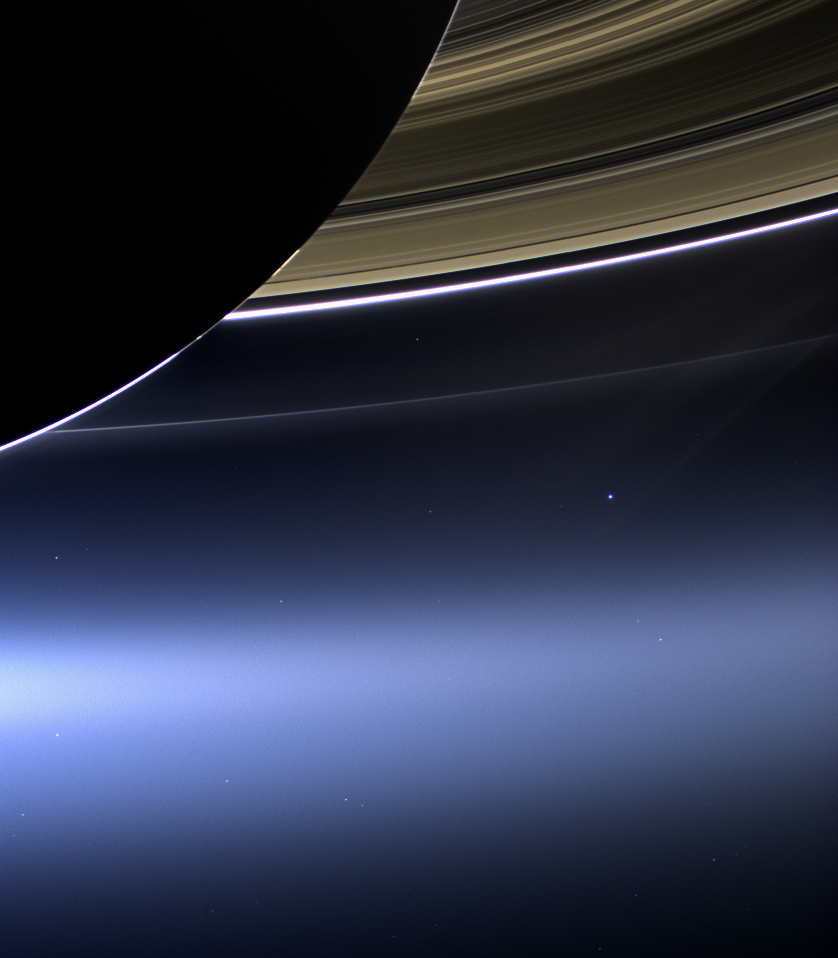


.png)

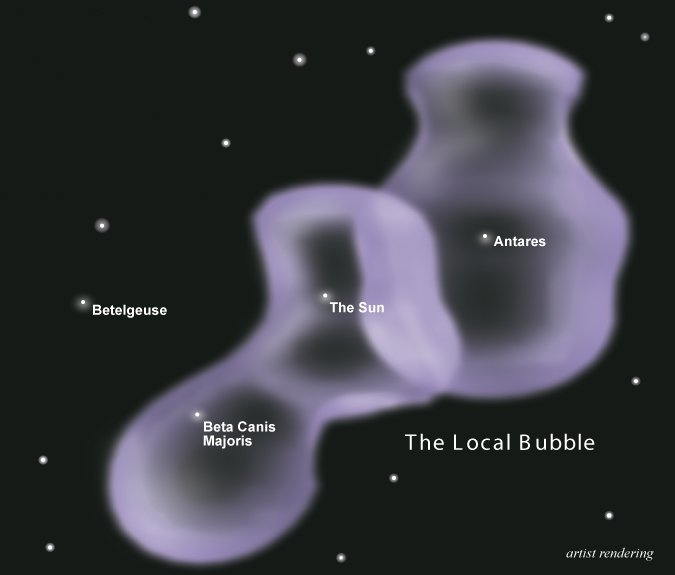
.png)
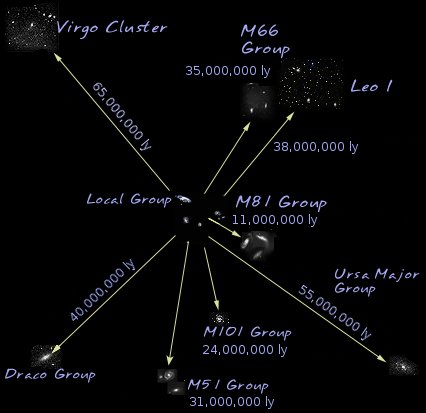

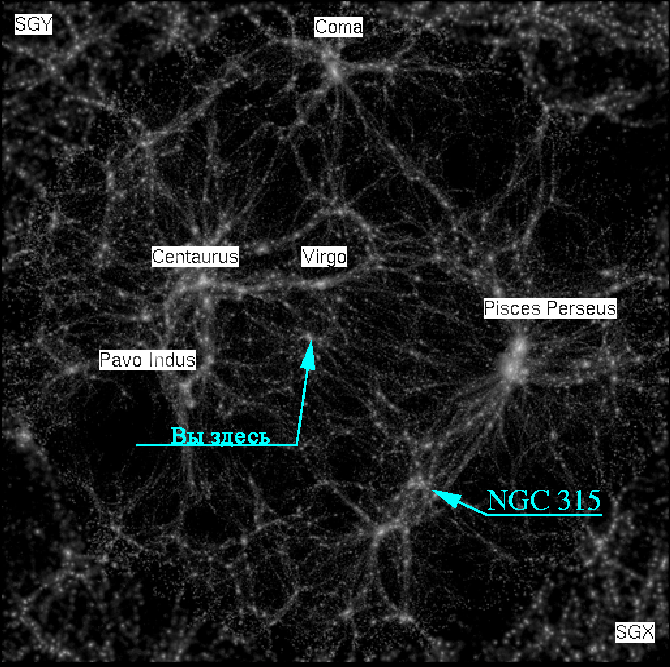

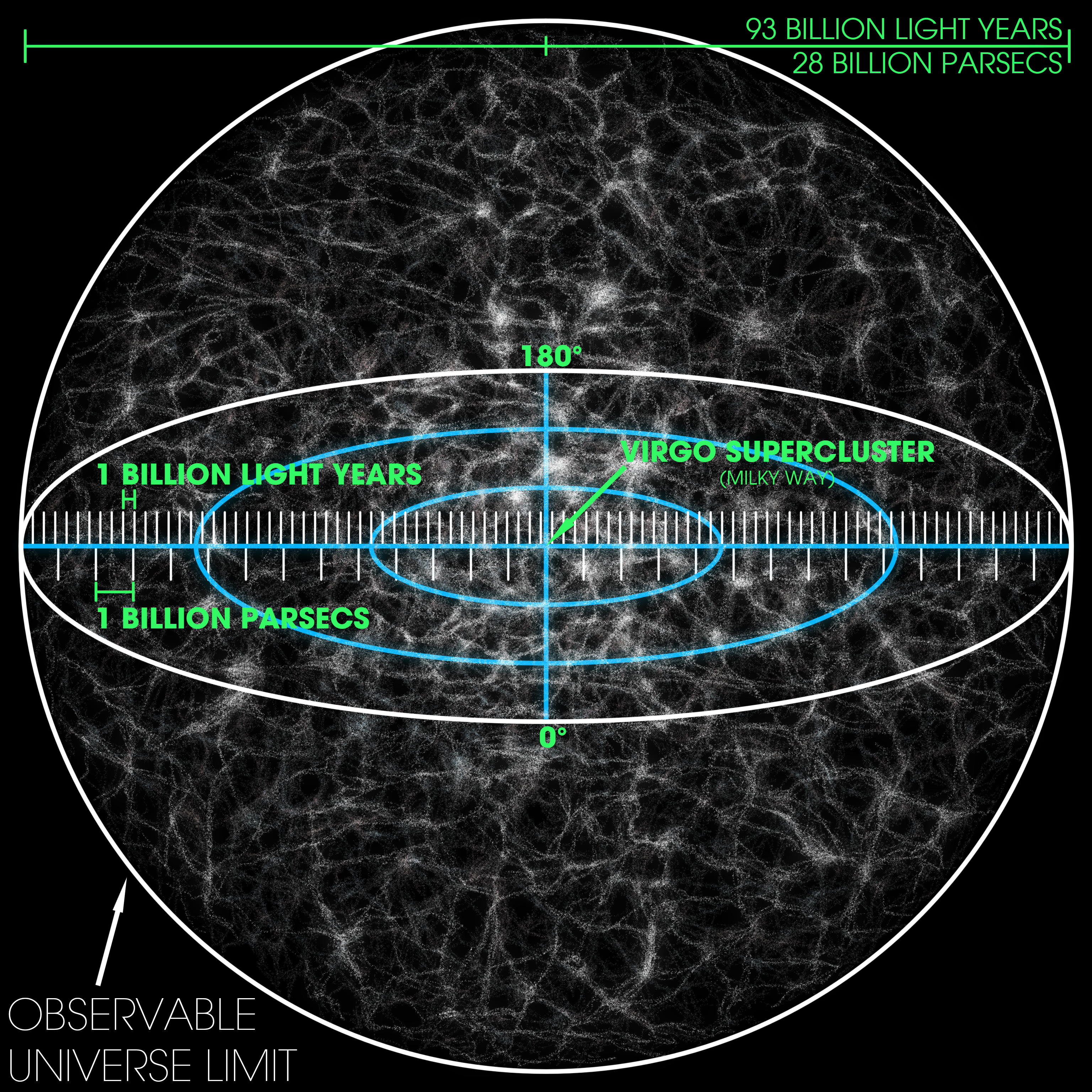
No comments:
Post a Comment